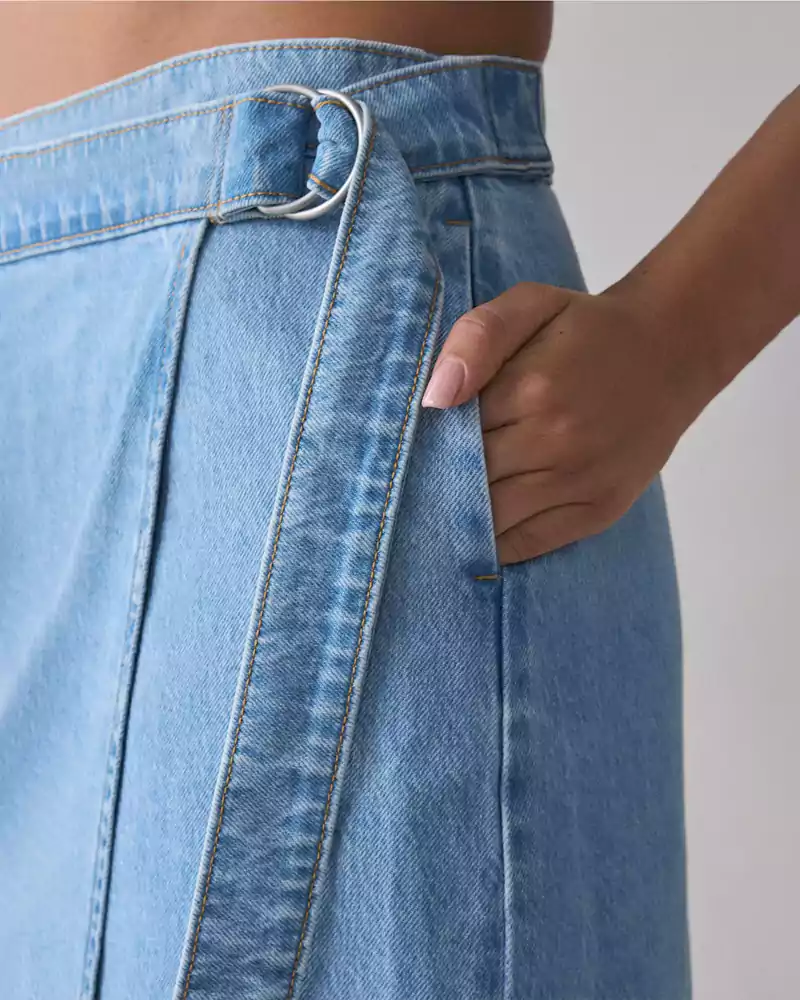Don't miss our holiday offer - up to 50% OFF!

How to soften denim
How to Soften Denim: A Complete Guide to a Perfectly Broken-In Pair

There’s nothing quite like the feeling of a brand-new pair of jeans. Yet, that crisp, stiff fabric can often feel more like cardboard than comfortable clothing. Breaking in raw or stiff denim is a rite of passage for denim enthusiasts, but you don’t have to suffer through months of discomfort.
Whether you’ve bought a rugged pair of raw selvedge denim or a budget-friendly find that’s surprisingly stiff, learning how to soften denim is a game-changer. This comprehensive guide will walk you through the safest and most effective methods to transform your rigid jeans into a second skin, complete with real-world examples.
Why Are New Jeans So Stiff?
Understanding the “why” helps us fix the “how.” New denim is stiff primarily due to the starch and sizing chemicals applied during manufacturing. This process gives jeans their pristine, shelf-ready appearance but sacrifices immediate comfort. For raw denim, the fabric is simply untouched and unwashed, leaving the cotton fibers in their natural, rigid state.
Method 1: The Wear-and-Tear Approach (The Natural Method)
The most traditional way to soften denim is simply to wear it. As you move, sit, walk, and bend, the fibers in the denim slowly break down and conform to your unique body shape.
How to do it:
- Wear them at home: Start by lounging in them for a few hours each day.
- Incorporate movement: Do squats, lunges, or simply move around to flex the fabric at the knees and hips.
- Be patient: This method can take several weeks, but it results in a truly personalized fade and fit.
Real-Life Case Study: The Selvedge Enthusiast
*Tom, a designer in Brooklyn, invested in his first pair of $275 Pure Blue Japan raw selvedge jeans. They were famously stiff and unyielding. Instead of washing them, he wore them almost daily for six months, allowing the natural oils from his skin and the physical stress of his commute and daily life to break them in. The result? A incredibly soft, custom-faded pair of jeans that are uniquely his, with honeycombs behind the knees and sharp whiskers around the front pockets.*
Method 2: The Warm Water Soak (The Gold Standard)
This is the most recommended method for softening raw denim without causing excessive shrinkage or loss of color. A warm water soak helps to release the initial starch and relax the cotton fibers.
How to do it:
- Fill a bathtub or a large bucket with lukewarm water.
- Submerge the jeans completely, ensuring every part is wet.
- Let them soak for 45-60 minutes. You’ll see the water turn slightly blue—this is excess dye releasing, which is normal.
- Agitate them gently with your hands every 15 minutes.
- Drain the water and gently press (do not wring) the jeans to remove excess water.
- Hang them to air dry completely.
Pro Tip: Adding a half-cup of white vinegar to the soak can help set the dye and prevent further color bleeding.
Method 3: Manipulate the Fabric by Hand
If soaking isn’t an option, you can manually break down the stiff areas.
How to do it:
- Roll and Scrunch: While the jeans are dry, repeatedly roll, scrunch, and bend the legs and waistband. Focus on the knee areas.
- Use a Fabric Softener Ball: For a quicker fix, toss a few dryer balls or clean tennis balls into the dryer with your jeans on a low-heat or air-fluff cycle. The constant bouncing will help beat the stiffness out of the fibers.
Real-Life Case Study: The Vintage Shopper
Maria found a perfect vintage 1990s Levi’s 501 pair at a thrift store. They were the right size but stiff from years of storage. Not wanting to alter their vintage character with a wash, she spent an evening watching TV while relentlessly bending and flexing the knees and seat. After an hour, the jeans were pliable enough to wear comfortably, and after a few outings, they softened up perfectly, preserving their original, untouched feel.
Method 4: The Salt Water Soak (For Color Retention)
This is an old-school trick, particularly popular for dark-wash jeans where you want to minimize color loss.
How to do it:
- Dissolve one cup of table salt in a basin of cold water.
- Soak the jeans for 24 hours.
- Rinse them with clean, cold water to remove the salt residue.
- Hang to dry.
The salt helps to lock the dye into the fibers, resulting in less fading during the initial softening process.
Method 5: Gentle Washing and Conditioning
For non-raw denim that is still stiff, a gentle machine wash can do the trick.
How to do it:
- Turn the jeans inside out to protect the outer surface from abrasion.
- Use a mild detergent and set the machine to a gentle, cold-water cycle.
- Add a small amount of liquid fabric softener for an extra softening boost. For a natural alternative, you can add a quarter-cup of baking soda to the wash cycle.
- Crucially, avoid the dryer. Always air dry denim, as high heat can set wrinkles and make the fabric feel stiff again.
What NOT to Do: Common Softening Mistakes
While you might be tempted to take drastic measures, avoid these common pitfalls:
- Don’t Use Bleach: It weakens the cotton fibers and can cause irreversible damage and yellowing.
- Avoid High Heat: Tumble drying on high heat is a primary cause of denim shrinkage and can make the fabric harsh.
- Don’t Over-Wash: Washing denim too frequently strips its natural oils and can accelerate fading. Spot clean when possible and only wash when necessary.
- Skip the Sandpaper: Some extreme methods suggest sanding your jeans. This physically damages the fabric and is not recommended.
Real-Life Case Study: The Denim Disaster
David bought a stiff pair of dark wash jeans for work. Impatient to soften them, he washed them in hot water and then tossed them in a high-heat dryer. The result was a disaster: the jeans shrank a full size, becoming uncomfortably tight, and the heat had baked in a crinkled, stiff texture that never fully went away. He learned the hard way that patience and cold-water washing are key.
Conclusion: Patience is the Ultimate Softener
Softening denim is an art that rewards patience. While methods like the warm water soak and manual manipulation offer quicker results, the most rewarding break-in process often comes from simply living in your jeans. Each method and bend becomes a part of your jeans’ story. By following these guidelines, you can ensure that story is a comfortable, long-lasting, and great-looking one. So, grab your stiff jeans and give them the TLC they deserve—your future, softer self will thank you.
